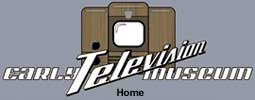Early Color Television John W. Christensen - CBS Color Television EngineerJohn Christensen, who was born in Circleville, Utah, joined CBS as chief engineer after World War II and was associated with the laboratory 34 years. He became vice president and associate director of research in 1957. He was one of Peter Goldmarks's main associates in the development and promotion of the CBS field sequential color system in the late 40s and early 50s.In 1980, he retired and formed a consulting company to develop equipment for the shale-oil industry. He died in 1987. John's son Craig has donated a large number of documents and photographs about CBS color. We are in the process of scanning these items and will post them on this page over the next few weeks. Here is what Craig said about his dad:
Photographs Brochures, Booklets and Reports Demonstrations and Lectures
|
